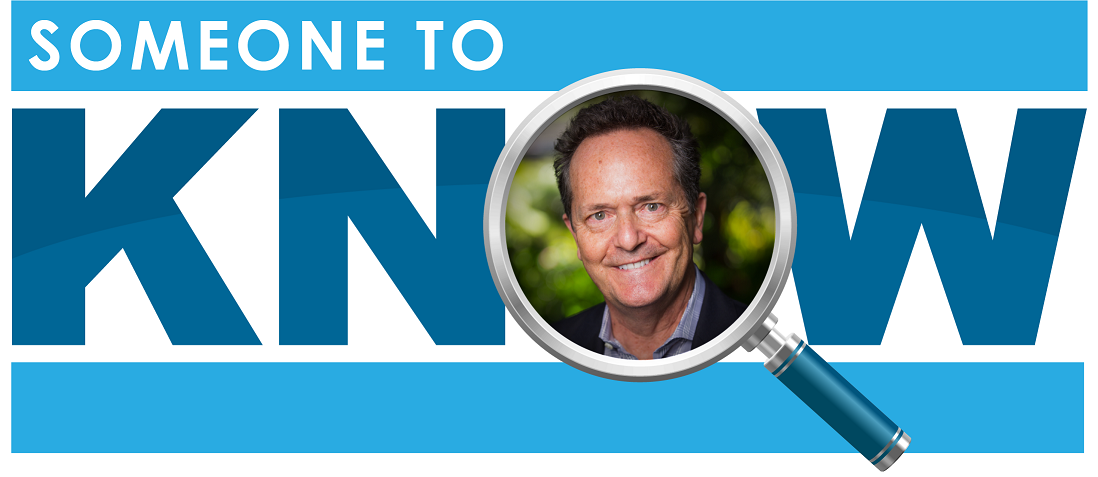Someone to Know: Q&A with Hitachi Vantara Senior Internal Communications Manager Brad Whitworth
If you’ve been part of our Thanksgiving tradition - Grandma Elsie’s Pumpkin Chiffon Pie - and other famous recipes, then you might already know a little bit about this smart and kind leader. Brad Whitworth, along with his wife Peg Champion, are the head Chefs of Grandma Elsie’s West Coast Test Kitchen and have brought forward many of our favorite recipes over the years featuring Grandma Elsie’s spices. And when he’s not testing recipes in Grandma Elsie’s honor, Brad serves as the Senior Internal Communications Manager at Hitachi Vantara. Prior to joining Hitachi, Brad led communication programs at HP, Cisco, PeopleSoft, Micro Focus and AAA, and is a sought after speaker on business communications. He shares incredible insights on everything from the most effective communications channels to the importance of knowing what you don’t know, to the lessons he’s learning from his new vineyard. I hope you enjoy his insights as much as I did!

Q&A with Brad Whitworth,
Senior Internal Communications Manager
at Hitachi Vantara
Q: How do you describe your role today?
A: In a word: changing. I think all of us in organizational communication have a new path we must forge for the future. For the longest time we were charged with both the creation of content and its distribution to our key stakeholders. The proliferation of powerful, low-cost technology, the emergence of social media channels and the democratization of information have changed all of that. Most of our organizations are empowering employees to create and distribute their own messages to their own audiences, both inside and outside the organization. And you know what? They can do it more quickly, more accurately and probably more credibly that we could ever hope to do from our seats in corporate communications. So, we have a new future ahead of us.
Q: What's one communications prediction you have for 2018?
A: Everything’s going mobile. Technology makes it possible for people to do work anywhere … at home, at a customer site, even on an airplane at 35,000 feet. Our communications must meet our audiences where they are, not where they have been. If your communication channels aren’t mobile-friendly, you’re losing a huge chunk of your audience. You can’t expect people to wait for information until they get back to their desk and their desktop/laptop computer. Your employees on the factory floor, on the sales floor, on the road, already connect with the rest of their world via smart devices. Don’t leave yourself out of that mix.
Q: What’s the biggest communication opportunity you see for companies today?
A: Companies need to find innovative ways to tap the non-formal networks that connect their workforces. If you scratch the surface of any company, you’ll find employees who effortlessly move information across, up and down the organization, even though they aren’t professional communicators. They’re the key influencers for whom communication comes naturally. Malcolm Gladwell called them “mavens” in his book Tipping Point – information brokers who share and trade what they know. There are firms out there who can help communicators uncover those networks and show us how to use them effectively. The best parts about communicating through non-formal networks: they’re fast, they’re credible and they’re free.
Q: What tried and true strategies do you count on to reach employees and help them feel engaged?
A: I think employee engagement is all about making sure that everyone in the workforce feels appreciated and connected. There are many ways to accomplish that. One of the simplest (and least expensive) is to say “thank you” on a regular basis. We never do that often enough in our lives at home, and it’s even rarer at work.
When I was at Hewlett-Packard, I saw the power behind Management by Wandering Around, or MBWA. The principle was that a leader couldn’t sit in an office or a conference room and wait for problems to arrive on her or his doorstep. Rather, leaders should be out every day talking to their employees … asking them about shipments, about sales, about their kids, about their sports team’s performance. And thanking them for their contributions. Leaders need to know their team members as both employees and people. You don’t have to have a lot of special recognition programs if employees feel their work is valued by leaders and customers.
One of the most powerful questions I saw an executive vice president ask of one of his employees was, “What are you working on?” That simple question demonstrated an interest in the employee’s contribution and offered a bit of a challenge at the same time. A couple of weeks after that MBWA encounter with the senior exec, the employee told me “That was the first time any executive showed an interest in what I was doing.” What a shame that our leaders are out of touch with their employees.
Q: We get asked often to share what the best companies are doing. What's an innovative practice that you’re seeing?
A: The smartest trend I’m seeing among top-notch companies is their move to subscription-based communication channels. Employee communication historically has been based on a one-size-fits-all philosophy. We never have had the resources to segment audiences and messages. Today’s technology makes that a lot easier. We should let employees subscribe to the information they feel will help them be most effective in fulfilling their roles. The reality is, they’ve been unsubscribing for years by using the delete key when they get stuff that they don’t find helpful. I believe that we need to start shifting from sender-centric communication models to receiver-centric ones and subscriptions are a step in the right direction.
Another major benefit to communicators of moving to a subscription-based model is that we get out of the list-maintenance business. It has been one of the most painful parts of any communicator’s job. And now it’s one of the easiest to jettison.
Q: It's been said that curiosity is one of the most important traits of a great leader. How has simply being curious helped you be a better leader?
A: If you’re not a curious person, you become indifferent to the world around you. You should always be looking for process improvements, for personal growth, for new challenges.
I’ve been lucky to work for most of my career in Silicon Valley where I’m surrounded by brilliant engineers who are putting technology to work to change the world around us. I love the fact that they are never content with the status quo … they’re always trying to find a new solution or a better methodology. Curiosity and change are key parts of their DNA. I’m fortunate that some of their curiosity and drive has rubbed off on me.
I learned a long time ago that a key part of professional development is discovering what it is that you don’t know. I’ve taken professional certification and accreditation exams to prove to myself what I’ve mastered and to learn what I don’t know.
Q: I know wine is a passion of yours. What is it about winemaking and enjoying wine that brings you such joy?
A: My wife and I moved to California’s Sonoma County almost five years ago after many years of visiting the area for food and wine events. We are lucky to live in a region where we are surrounded by amazing people who practice an art form that’s been around for more than 10,000 years … growing grapes and turning them into a satisfying and tasty end product. Wine comes with its own special set of folklore, customers, terminology and can be appreciated equally by both experts and amateurs. I’ve learned a lot about the business, but I also know I have so much more to learn.
We’re in the throes of planting our own small vineyard and getting into the business. We’ve been learning about soil types, root stocks, irrigation and varietal clones. Perhaps the most important lesson we’ve learned is one of patience. After four years of replenishing the soil, our root stock goes into the ground this spring. Our varietal will be grafted onto the root stock in 2019. We’ll have a meager crop of grapes in 2020 and – if all goes well – a decent harvest in 2021. The wine from those grapes won’t be ready until 2023. Farming … that’s really what the wine business is all about … teaches you to have a long-term view, to appreciate equally the rain and the sun, and to take things one day at a time.
----

Brad Whitworth is senior internal communications manager at Hitachi Vantara. Before joining the wholly owned subsidiary of Hitachi, Ltd., in March 2018, Brad led communication programs at HP, Cisco, PeopleSoft, Micro Focus and AAA. He holds undergraduate degrees in both journalism and speech from the University of Missouri and an MBA from Santa Clara University. A former broadcaster, Brad has made more than 300 presentations to executives, communicators, and university classes around the world. Brad is a past chairman of the board of IABC (International Association of Business Communicators), a past president of two local IABC chapters and a Fellow of the organization. He is a contributing author to The IABC Handbook of Organizational Communication and the IC Kollectif’s Disrupting the Function of IC: a Global Perspective. You can reach Brad at brad@bradwhitworth.com.
To read more executive Q&As in our Someone to Know Series, click here.
Click below to download the eBook—Going Slow to Go Fast: Making Internal Communication Work For You—and learn how to navigate the core challenges that today’s communicators face: technology, culture changes, company leadership, and more!

Comments on this post